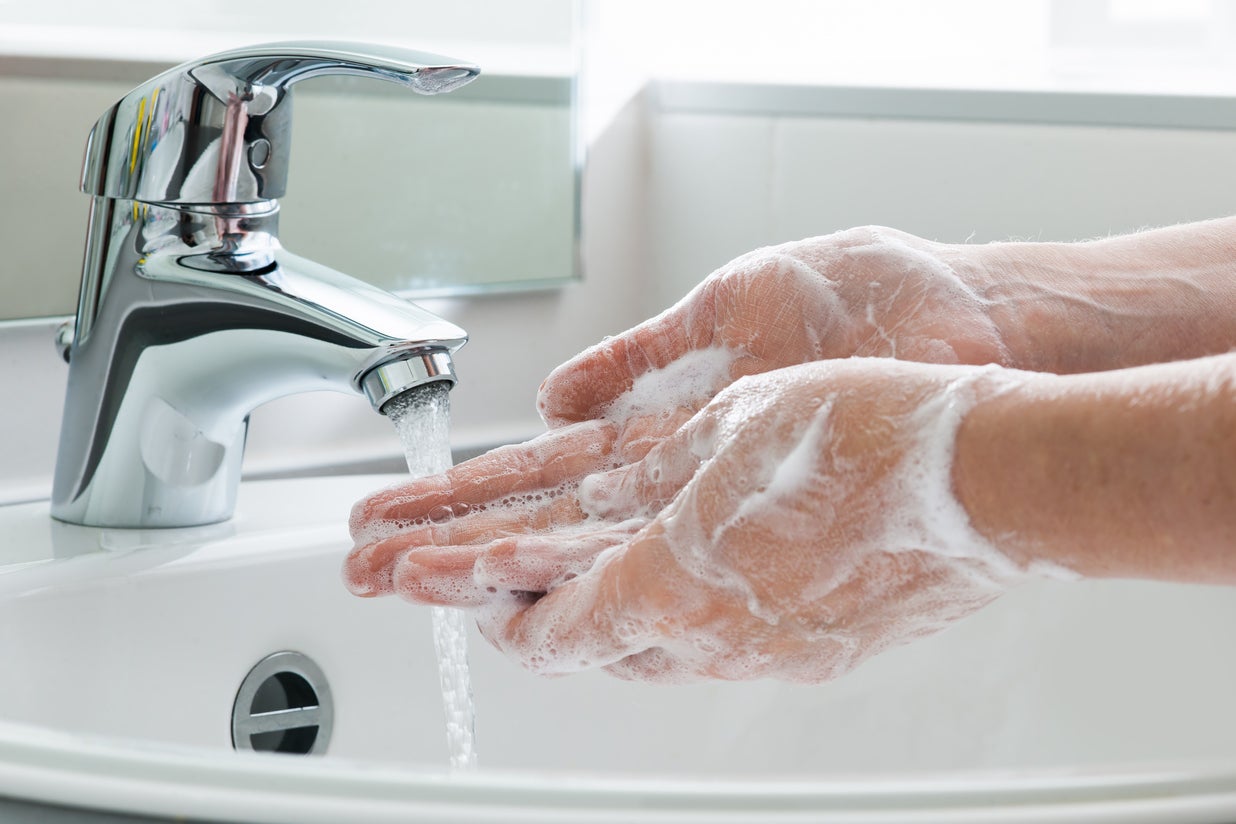How to wash your hands correctly to limit spread of disease
Hand-washing reduces respiratory illnesses in the general population by 16 to 21 per cent

Your support helps us to tell the story
From reproductive rights to climate change to Big Tech, The Independent is on the ground when the story is developing. Whether it's investigating the financials of Elon Musk's pro-Trump PAC or producing our latest documentary, 'The A Word', which shines a light on the American women fighting for reproductive rights, we know how important it is to parse out the facts from the messaging.
At such a critical moment in US history, we need reporters on the ground. Your donation allows us to keep sending journalists to speak to both sides of the story.
The Independent is trusted by Americans across the entire political spectrum. And unlike many other quality news outlets, we choose not to lock Americans out of our reporting and analysis with paywalls. We believe quality journalism should be available to everyone, paid for by those who can afford it.
Your support makes all the difference.As coronavirus, now known as covid-19, continues to spread, health organisations are urging people to engage in basic protective measures to curb the spread of the deadly disease.
While it may seem obvious, one of the easiest and most foolproof methods for limiting the spread of coronavirus and other diseases is by washing your hands, according to the World Health Organisation (WHO) and the Centres for Disease Control and Prevention (CDC).
But that doesn’t mean a simple rinse in the sink is sufficient, as the agencies' guidelines state that you must wash your hands for “at least 20 seconds” for the preventative action to be effective.
This is how to wash your hands correctly
According to the CDC, you should wash your hands often with soap and water for at least 20 seconds, “especially after going to the bathroom; before eating; and after blowing your nose, coughing, or sneezing”.
The agency also encourages people to wash their hands “before, during and after preparing food, before eating, before and after caring for someone who is sick with vomiting or diarrhoea, before and after treating a cut or wound, after changing diapers, after touching an animal, animal feed or animal waste, after handling pet food or pet treats, and after touching garbage”.
To wash your hands correctly, the CDC suggests following these five steps: wet, lather, scrub, rinse, dry.
First, you should wet your hands with clean, running water, before turning off the tap and applying soap. The next step consists of lathering your hands by rubbing them together with the soap. During this step, you should lather the backs of your hands, between your fingers, and under your nails.
After lathering up, you should then scrub your hands for at least 20 seconds, or roughly the length of time it takes to sing “Happy Birthday” twice, according to the CDC.
Once you’ve finished scrubbing, you should rinse your hands well under clean water, before drying your hands using a clean towel or by air-drying them.
While washing your hands with soap and water is the most effective method for killing germs, if you cannot access either, the CDC suggests using an alcohol-based hand sanitiser that contains “at least 60 per cent alcohol”.
To effectively use hand sanitiser, the CDC says you should apply the product to the palm of one hand and rub your hands together. You should then rub the gel all over the surfaces of your hands until your hands are dry, a process that should take around 20 seconds.
How effective is washing your hands?
According to the CDC, hand-washing is important because germs are easily transferred from unwashed hands to other objects such as handrails or table tops, which in turn can make other people sick.
When you wash your hands with soap and water, respiratory illnesses like coronavirus or colds are reduced in the general population by 16 to 21 per cent, with WHO stating that washing your hands “eliminates the virus if it is on your hands”.
Washing your hands also decreases the risk of spreading diarrhoeal illnesses in people with weakened immune systems by 58 per cent, as well as spreading skin and eye infections.
According to researchers from the Massachusetts Institute of Technology (MIT), washing your hands the correct way at the airport could help curb a pandemic such as coronavirus by up to 69 per cent.
However, as of now, the team estimates that, on average, just 20 per cent of people in airports have clean hands – with the other 80 per cent “potentially contaminating everything they touch with whatever germs they may be carrying,” co-author Professor Christos Nicolaides said.
Other preventative measures you can take
According to the global health agencies, there are other basic preventative actions you can engage in as well to decrease your risk of getting sick.
The CDC recommends avoiding close contact with people who are sick, staying home when you are sick, covering your cough or sneeze with a tissue, and then disposing of the tissue in the trash, and cleaning and disinfecting frequently touched objects and surfaces using cleaning spray.
WHO advises maintaining a distance of at least three feet between yourself and other people, particularly those who are displaying symptoms of illness, as respiratory diseases such as coronavirus can spread through small droplets projected by coughs or sneezes.
And while you may see an increase in the number of people wearing face masks, the CDC does not recommend that people who are well wear the masks to protect themselves from coronavirus.
Join our commenting forum
Join thought-provoking conversations, follow other Independent readers and see their replies
Comments